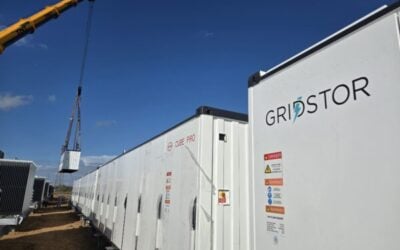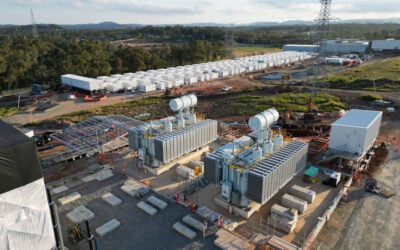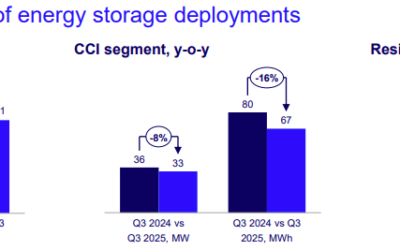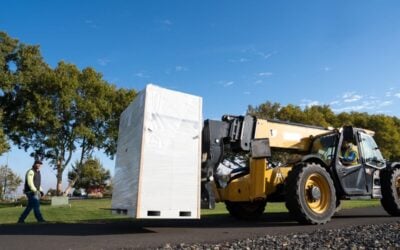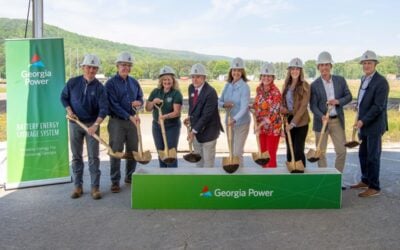
Australia went to the polls on May 3, 2025, to elect its next federal government. The Labor Party, led by Anthony Albanese, secured a landslide victory and a second consecutive term.
Although the seats are still being counted, at the time of writing the Australian Labor Party has secured 85 seats, the Liberal-National Coalition, led by climate sceptic Peter Dutton, who lost his own seat, has secured 40 seats, and the Green Party has secured no seats.
The 2025 federal election saw energy policy weaponised with two contrasting opinions on where to take the country next in its energy transition. Indeed, the Clean Energy Council deemed the election a “referendum on renewable energy.”
The result of this “referendum” saw a majority vote for the continued trajectory the Labour Party is taking in Australia, emphasising scaling renewable energy generation and supplementary technologies, such as energy storage.
Try Premium for just $1
- Full premium access for the first month at only $1
- Converts to an annual rate after 30 days unless cancelled
- Cancel anytime during the trial period
Premium Benefits
- Expert industry analysis and interviews
- Digital access to PV Tech Power journal
- Exclusive event discounts
Or get the full Premium subscription right away
Or continue reading this article for free
“My fellow Australians, serving as your prime minister is the greatest honour of my life,” a visibly emotional Albanese said Saturday evening.
“And it is with a deep sense of humility and a profound sense of responsibility, that the first thing that I do tonight, is to say thank you to the people of Australia, for the chance to continue to serve the best nation on earth.”
Labor, whose 2025 election manifesto reiterated support for an expanded Medicare health support system and 5% deposits for all first-time home buyers, has been a staunch supporter of renewable energy generation and energy storage as a complementary technology.
These two technologies have been deemed critical in securing Australia’s vision as a “renewable energy superpower.”
Labor to deliver AU$2.3 billion home BESS subsidy scheme
One of the Labor Party’s primary election pledges was to introduce an AU$2.3 billion (US$1.38 billion) home battery subsidy scheme to encourage and reduce the cost of installing battery energy storage systems (BESS) at home. This is expected to be introduced on 1 July 2025, and the upfront cost of home BESS units will be reduced by 30%.
Under the scheme, Labor predicts it could help Australia install around one million new home batteries by 2030.
Australia’s energy minister, Chris Bowen, spoke at the Smart Energy Conference industry event in Sydney on 9 April, appealing to the energy industry’s support in delivering Labor’s vision for the energy transition.
“I’m pleased with our progress in the past few years. But we’re just getting started. Everything we’ve done is stoppable and reversible under a new government,” Bowen said.
The Albanese government has introduced several policy mechanisms to spearhead this transition. Since it took office in 2022, the country has seen vast support for renewable energy developments and energy storage through various mechanisms introduced, such as the often-oversubscribed Capacity Investment Scheme (CIS) tenders and the Solar Sunshot initiative, which aims to stimulate domestic PV manufacturing and support the country’s clean energy goals.
Liberal-National Coalition’s shortcomings
In contrast to Labor’s strong message on renewables and energy storage, the Liberal-National Coalition led a campaign echoing the sentiments of US President Donald Trump, scrutinising renewable energy, with plans to scale this back and invest further into oil and gas, coal-fired power, and nuclear reactors to reduce energy bills.
As Energy-Storage.news heard in the build-up to the federal election, and noted by Bowen in early April, a change of government and energy policy could have led to “chaos and delay”, with Dutton having already announced his interest in gutting the widely successful CIS initiative.
However, even though a change of government could have disrupted the rollout of renewables, the upward trajectory of energy storage capacity growth was unlikely to be impacted by a change of government, Sahaj Sood, senior associate at research provider BloombergNEF, explained with the release of the company’s 2025 Australia Energy Storage Update.
“Batteries are expected to play a major role in Australia’s power markets regardless of the outcome of the federal election,” Sood said.
“A win for the incumbent Labor Party would see continued support for renewables and the batteries to integrate them. A win for the Coalition would see the emphasis shift toward nuclear, a potential lifeline for some of the country’s ageing coal fleet.”
The Australian Financial Review has reported that the Coalition’s crushing defeat in the election has sparked an inquest into the political party’s energy policy, specifically its support for nuclear power, which could now be shaken up.
“Several senior Liberals on Sunday indicated the party would need to consider dumping the plan if it was to find a path back to government,” the article read.
‘Time to leave the politics behind’
The Clean Energy Council’s chief executive, Kane Thornton, has said that the Albanese government’s re-election provides continuity for strong and effective policy, which is critical to underpin new investment in clean energy and, in turn, lower power prices for all Australians.
“It’s now time to leave the politics behind and get on with the job of rolling out renewable energy to deliver affordable and reliable power for all Australians,” Thornton said.
“We look forward to working closely with the government to ensure these policies maximise investor certainty and deliver lower power prices and enormous benefits to communities throughout rural and regional Australia.
“This also includes ensuring the effective design and implementation of the government’s promised Cheaper Home Batteries rebate program, much-needed reform to environment and planning laws and reform to the energy market to ensure clearer incentives for new investment, including for long-duration energy storage.”

